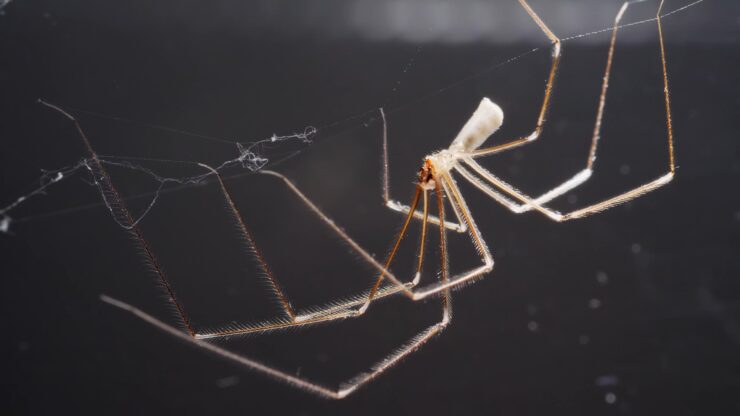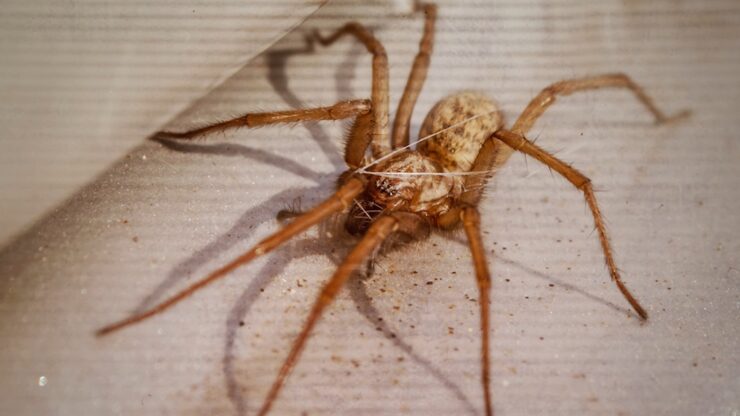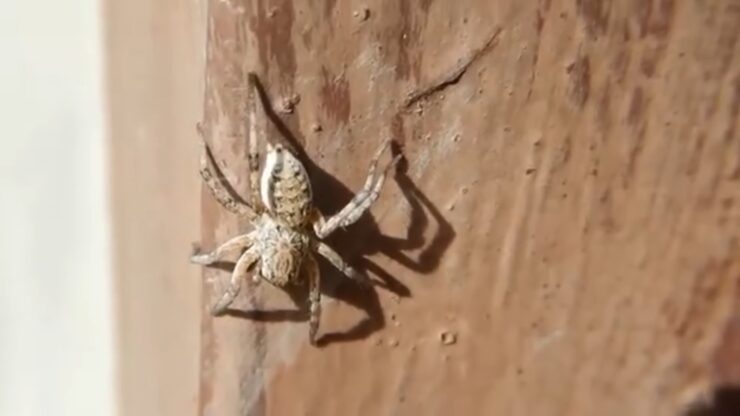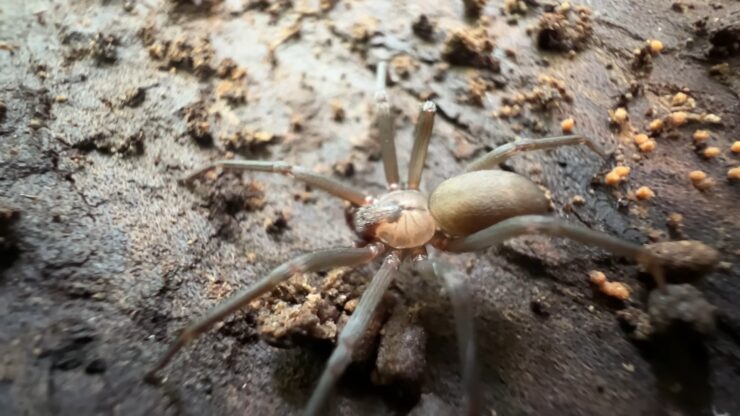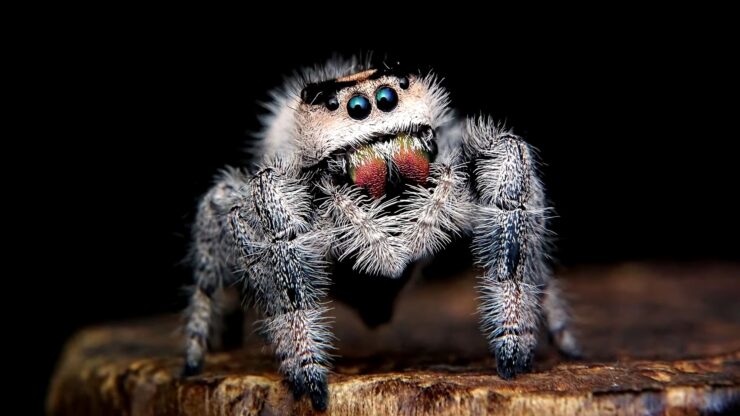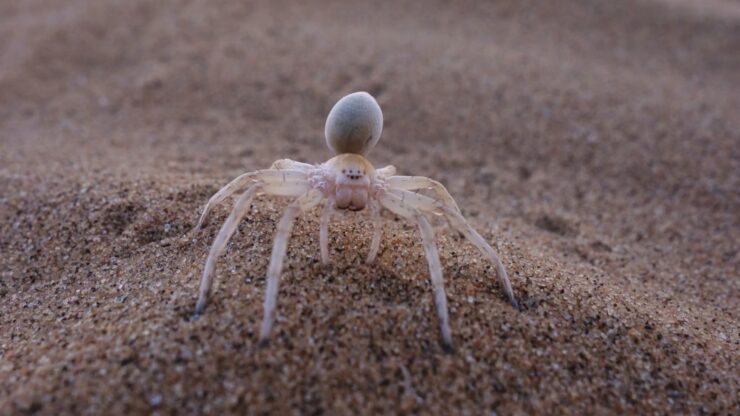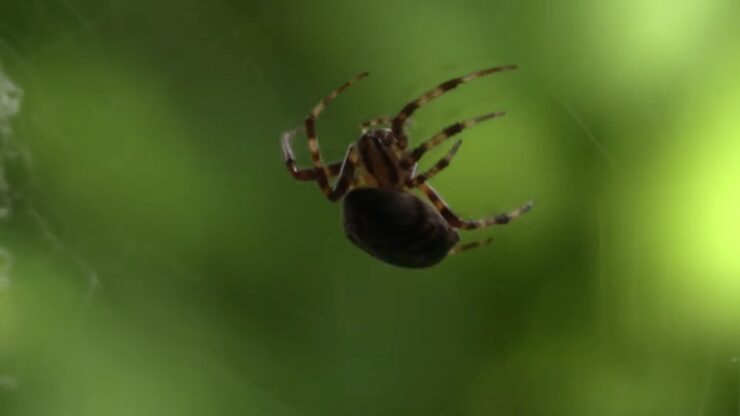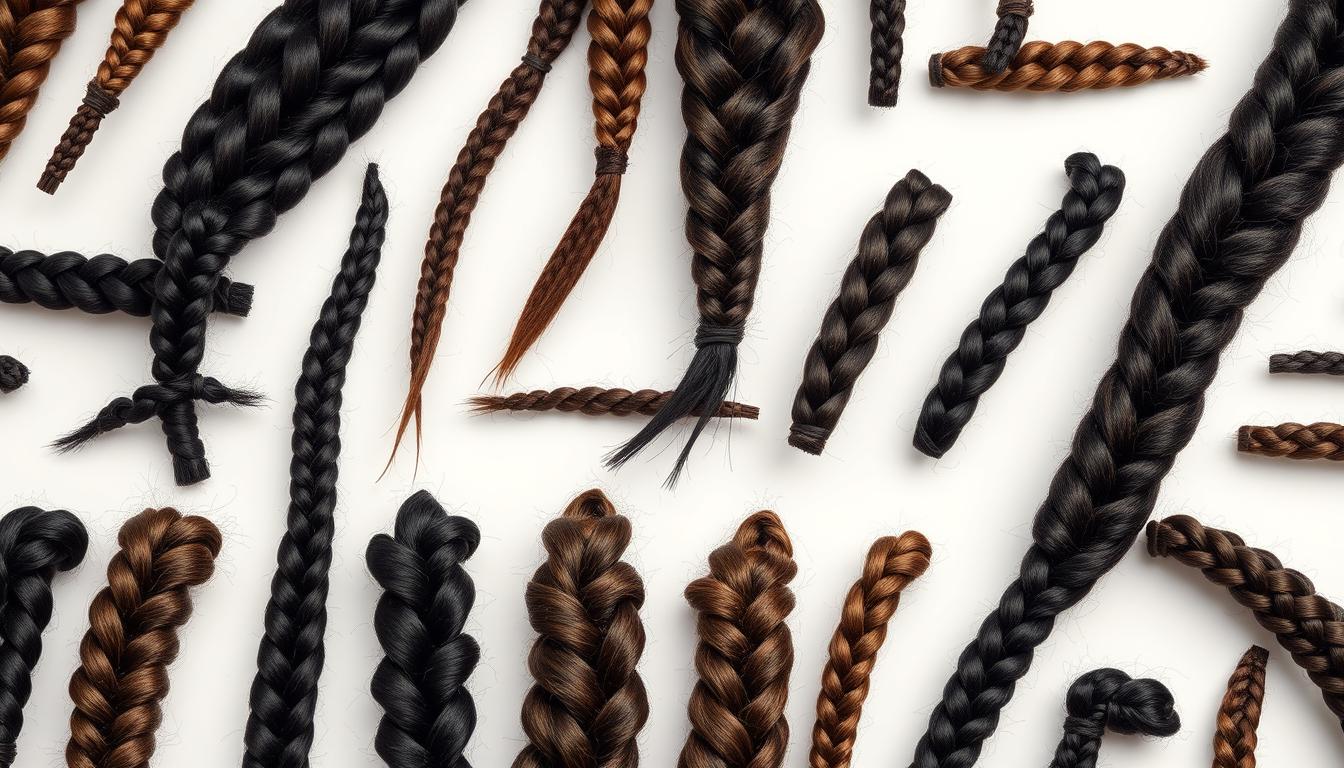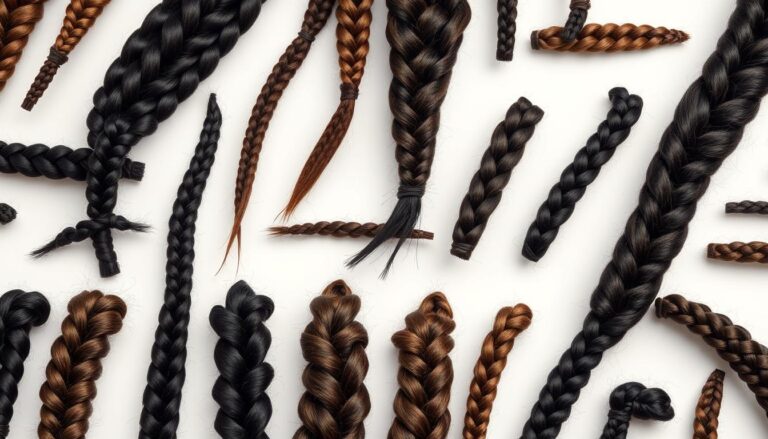North America is a haven for a diverse range of arachnids. While there are approximately 40,000 spider species globally, close to 3,000 can be found in North America, as noted by Pests.org. Given this vast variety, it’s not surprising to occasionally find house spiders in our living spaces, ants also.
Recognizing these species is crucial, especially for those who are particularly uneasy around these eight-legged creatures. The sight of a spider in one’s home can indeed be unsettling, and the frequency of such encounters might increase with seasonal changes.
However, here’s a comforting thought: Having spiders in your vicinity can be beneficial. As entomologist Roberto M. Pereira, Ph.D., from the University of Florida, points out, most spiders are harmless to us and act as natural predators to other pests. In simpler terms, they help in keeping away unwanted insects like cockroaches, flies, and millipedes.
Nevertheless, while many are harmless, a few can pose challenges, particularly in the context of spider bites (refer: methods to address a spider bite). Below is a guide to some prevalent house spiders, tips to recognize them, and insights into their potential harm (spoiler: the majority are safe).
So, Which One Lives In Your House?
10. American House Spider
Appearance: These petite spiders are roughly the size of a nickel, boasting a round abdomen. Their color is predominantly grey, adorned with some white patterns.
Marc Potzler, an expert entomologist affiliated with Ehrlich Pest Control, points out their distinctive web, which often appears chaotic and disorganized.
Habitat: These spiders are fans of dimly lit, hidden spots. Potzler mentions, “They’re often spotted lurking in corners, beneath cabinets, in basements, or near windows in garages where flies tend to gather.”
Are they dangerous? Not at all.
9. Wolf Spider
Appearance: Given that there are over 200 distinct species of wolf spiders, their size and looks can vary. Potzler notes that the largest ones can stretch up to 1.5 inches. Their color palette includes shades of gray, brown, and black.
Their hairy texture can sometimes lead to them being confused with tarantulas. An interesting trait, as highlighted by Howard Russell, an entomologist from Michigan State University, is that they’re wandering spiders that don’t weave webs; instead, they actively pursue their prey.
Habitat: Wolf spiders are typically found in places teeming with other insects. Potzler suggests looking in garages, basements, sheds, and other shadowy, enclosed spaces. They’re not just indoor creatures; they can also be found outdoors, amidst debris, under planks, or in crevices around houses.
Are they dangerous? Russell emphasizes that they are more inclined to retreat than to attack. So, they’re not harmful.
8. Black Widow
Appearance: The notorious black widow is easily identifiable by its glossy black hue and the iconic red hourglass-shaped design on its belly, as described by Potzler. He further mentions the possibility of red patterns extending up its back.https://www.youtube.com/watch?v=wcdKlgFOPsQ&pp=ygUSYmxhY2sgd2lkb3cgc3BpZGVy
Habitat: These spiders have a penchant for areas with edges, corners, and tall grasses, as highlighted by Russell. They can also be discovered in unexpected places like mailboxes or garages.
Are they dangerous? Potzler warns that the black widow is among the few spider species that pose a genuine threat to humans. While around 2,200 bites are reported annually, no fatalities from a black widow bite have been recorded in the U.S. since 1983.
If bitten, symptoms such as severe pain, muscle rigidity, potential nausea, and vomiting may manifest within hours. In such cases, it’s imperative to seek emergency medical attention immediately.
7. Brown Recluse
Appearance: The brown recluse sports a brown shade and is distinguished by a unique “violin-shaped” mark on its head and back, as pointed out by Potzler. An interesting fact is that they possess six eyes, in contrast to the typical eight seen in many other spiders.
Habitat: Preferring tranquil spots, the brown recluse is often found in untouched corners of homes, sheds, basements, or cellars. Potzler cautions that many bites transpire when the spider is concealed in folded linens, beneath clothing piles, or inside footwear. For those residing in regions where these spiders are prevalent, it’s advisable to shake out garments and shoes or don protective gloves when working in sheds or garages.
Are they dangerous? Indeed. Pereira emphasizes the potential harm the recluse can inflict on humans. The bite sites can be particularly problematic. Russell warns that a bite from a brown recluse can lead to necrotizing injuries, which destroy surrounding cells and tissue. Immediate medical consultation is crucial if one suspects a bite from this spider.
6. Daddy Longlegs
Appearance: This is a spider most are acquainted with. It features a singular round body segment with extremely slender, elongated legs radiating from it.
Habitat: Primarily outdoor dwellers, they occasionally take shelter beneath sidings or are spotted on or beneath patios. Potzler mentions, “They’re predominantly seen on grassy areas or perched in trees.”
Are they dangerous? Not in the slightest. Potzler debunks a popular online myth, stating, “Despite widespread beliefs, daddy longlegs aren’t equipped with lethal venom potent enough to kill a horse. In fact, they lack venom glands altogether and are harmless to humans.”
5. Hobo Spider
Appearance: Hobo spiders exhibit a tan-brown hue. The top part of their body displays a mottled appearance, characterized by alternating dark and light patches, as described by Potzler. They appear somewhat furry, with spiky hairs protruding from their legs.
Habitat: Though they predominantly reside outdoors, they occasionally wander indoors. Potzler warns, “They might seek refuge in clothing, bedding, or footwear.”
Are they dangerous? Indeed. Potzler clarifies, “A bite from the hobo spider can cause localized redness and discomfort, but it doesn’t lead to necrotic wounds.” Typically, over-the-counter pain relievers and cold compresses can alleviate symptoms within a day.
4. Jumping Spider
Appearance: With over 300 distinct species, their appearances can vary considerably. Potzler describes them as ranging from solid black with unique patterns to zebra-striped, and some even flaunt iridescent markings. Their most distinguishing feature is their notably large front middle eyes, though many might not wish to get close enough to observe this.
Habitat: These spiders are versatile in their choice of habitat. They don’t spin webs but are active daytime hunters, as Potzler notes. Whether it’s indoors on walls and ceilings, in attics, or outdoors on buildings and trees, they can be spotted almost anywhere.
Are they dangerous? Not particularly. While they might bite if threatened, Russell assures it’s typically harmless.
3. Yellow Sac Spider
Appearance: Recognizable by their tent-like silk structures, these spiders are nocturnal hunters, retreating to their sacs during the day. They usually sport a pale beige or yellow hue with a distinct dark V-shaped marking on their body.
Habitat: Their webs are often located at the junction of walls and ceilings or in corners. Potzler mentions they’re commonly found in living spaces like bedrooms, living rooms, and kitchens.
Are they dangerous? While bites are rare, Potzler warns that certain individuals with compromised immune systems or pre-existing health conditions might require hospitalization after a bite.
2. Orb Weaver Spiders
Appearance: These are the architects behind the large, dew-covered webs often seen in the mornings. Potzler explains that they construct their web daily, only to dismantle and rebuild it the next day. They can have either spiny or smooth abdomens and are typically brown or gray. With numerous species, some can be hard to differentiate from other spiders.
Habitat: They strategically position their webs to trap flying insects, often near outdoor lighting or on decks and house exteriors.
Are they dangerous? While they have the capability to bite, it’s usually inconsequential for most individuals, as per Potzler.
1. Grass Spiders
Appearance: Potzler describes them as rather “plain” brown spiders. They can be mistaken for the brown recluse, but a distinguishing feature is their elongated spinnerets, which the brown recluse lacks.
Habitat: They’re typically found near home foundations. However, Potzler notes that male grass spiders might occasionally venture indoors in search of a mate.
Are they dangerous? They can bite, but Potzler assures that there haven’t been any medically significant cases reported.
How Dangerous Are Common House Spiders?
Most common house spiders, such as the Daddy Long Legs and American House Spider, are largely harmless. Their physical makeup, including their teeth and venom, isn’t potent enough to cause any significant harm to humans.
While many people might find spiders unsettling or even frightening due to their appearance, from a safety perspective, these creatures don’t pose any real threat.
A popular misconception is that Daddy Long Legs possess venom lethal to humans but lack the fangs to deliver it. However, this myth has been debunked by reputable institutions like UCLA, which clarified that there’s no credible evidence to suggest that the venom of a Daddy Long Legs could harm a human if injected.
The only spiders you should be cautious of are the brown recluse and the black widow. Even so, encounters with these spiders are quite rare. It’s essential to understand that even these “dangerous” spiders aren’t naturally aggressive. They usually bite only when they feel threatened, such as when they’re accidentally trapped or disturbed.
How to Eliminate Common House Spiders?
Contrary to what one might think, spiders aren’t keen on cohabiting with humans. They usually venture indoors in search of food.
Here are some effective strategies to deter spiders from your home:
- Relocate Vegetation: Keeping plants and shrubs away from the immediate vicinity of your home can reduce the likelihood of spiders setting up shop near your residence.
- Maintain Cleanliness: A tidy home offers fewer hiding spots for spiders and reduces the chances of them laying eggs.
- Dim the Lights: While spiders aren’t drawn to light, many of their prey, like moths and other insects, are. By keeping lights off, you can reduce the food source for spiders.
- Seal Openings: Ensure that there are no gaps or openings in your home’s structure, especially in areas like the siding, eaves, and overhangs. Use mesh screens or, in a temporary fix, duct tape to seal these gaps.
- Remove Rotten Wood: Damp, decaying wood is an ideal habitat for spiders. Ensure that any rotting wood is kept away from your home.
- Natural Repellents: Consider making a homemade spider repellent. There are numerous DIY methods available, including the one mentioned in the video below, which can help keep spiders at bay.
Which States Have the Most Common House Spiders?
If you’re pondering which states in the U.S. have the most prevalent spider issues, the answer is largely influenced by the climate. Warmer climates tend to have a more abundant insect population, which in turn attracts spiders.
Using Google’s Trends tool, we can gauge the frequency and locations where people are searching for “pest control services.” While this data might not be exclusively about spiders, it provides a general idea of the bug-heavy regions in the U.S.
Here’s the rundown:
- Arizona: Known for its desert climate, Arizona has a variety of spiders, including the infamous black widow.
- Florida: The humid climate of Florida is a haven for many insects, which in turn attracts spiders.
- Alabama: Warm temperatures and a good amount of rainfall make Alabama a hotspot for various bugs and spiders.
- South Carolina: The state’s humid subtropical climate is conducive for spiders to thrive.
- Georgia: Another state with a humid climate, Georgia sees its fair share of spiders.
- Tennessee: The diverse topography and climate of Tennessee provide an ideal habitat for a variety of spiders.
- Texas: Given its vast size and varied climates, Texas is home to a wide range of spiders.
- Utah: Despite its more temperate climate, Utah still has a significant number of spiders, especially in its warmer regions.
- Nevada: The desert regions of Nevada are home to several spider species.
- Mississippi: The warm and humid climate of Mississippi is a magnet for both insects and spiders.
Final Words
In the vast world of arachnids, understanding our common house spiders can provide peace of mind and a safer living environment. While most are harmless, being informed allows us to coexist without unnecessary fear. Remember, spiders play a crucial role in our ecosystem, helping control other pests.
So, the next time you spot one, take a moment to appreciate its role before deciding your next move. Stay informed, stay safe, and coexist harmoniously with nature.

